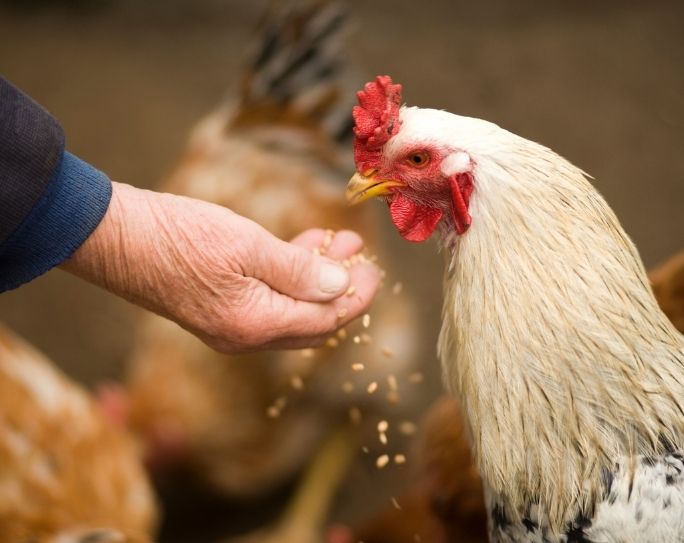4 chicken-sitting tips to prevent the spread of disease

If you’re a professional pet sitter, ensuring the pets in your care remain safe, happy and healthy is a top priority, and you’ve likely wondered about the risks of transmitting diseases and/or parasites between clients’ homes. During PSI’s February 2017 free member webinar, “What you should know before accepting a chicken-sitting assignment,” members learned that this concern is particularly significant if you are offering chicken-sitting services, as transmitting diseases—including salmonella and toxitiosis—between flocks can be a real issue.
Biosecurity concerns when caring for chickens
So, what can you do if you are sitting for clients’ chickens? The webinar presenter, Andy G. Schneider, The Chicken Whisperer®, shared that dust on your clothing and in your hair can transmit diseases between flocks—but the biggest culprit? Your shoes.
Schneider shared that an ideal solution would be to step in disinfectant, then brush your shoes off with a long-handled brush before and after every chicken-sitting assignments. While ideal, this solution may not be realistic or possible during your day-to-day pet-sitting assignments, so he offered a recommended alternative.
Take these four steps to avoid carrying diseases between chicken flocks:
- Buy and use surgical booties for chicken-sitting assignments. The booties are disposable and inexpensive. A quick search for surgical booties on Amazon yields several results for packs of 100 or more for less than $20.
- Keep hand sanitizer with you at all times. Be sure to use the hand sanitizer before and after handling chickens and/or being in the chicken coop area.
- Use disposable hair caps (like surgeons use). Because dust can travel in your hair, it is a good idea to wear hair caps—and be sure to change hair caps and booties before going to a different flock.
- For extra protection, consider a one-piece coverall. Disposable coveralls are also fairly inexpensive, and each coverall can be worn for a few visits to the same flock.
Additional chicken-sitting considerations
If you’ve never been asked to offer pet sitting for a backyard flock, it’s very possible you could receive this request in the near future. PSI’s 2016 State of the Industry Survey revealed a sharp increase in chicken sitting. The survey found that 85 percent of PSI member pet sitters who offer livestock care say they offer care for chickens and barnyard fowl—up from 58 percent in 2014. Twenty-six percent of sitters offer livestock care.
As The Chicken Whisperer® shared during the February 2017 webinar, you will want to learn more about the following before offering (or agreeing to) chicken-sitting services:
- Chicken coop setups. The varieties of chicken coops are almost endless—from expensive designer coops to those that are entirely “homemade.” However, all coops should include the same basic elements: human entry door, pop door, windows/ventilation, roost, nesting boxes and bedding.
- Chicken run setups. Again, chicken runs will vary but should offer chickens a space outside of the coop, but inside of a protective fence.
- Basic chicken duties. During a chicken-sitting visit, you’ll need to understand the feed types and amounts, as well as the clients’ preferred feeding and watering systems. Your assignment will also likely include the collection of eggs, and it may include additional duties, depending upon the season.
- Protection from predators. Chickens have a variety of predators, so understanding the predators in your area and ensuring that chickens are protected is extremely important. This may include making sure all fencing is secure and that the run and coop are closed.
- Seasonal care concerns. There may be additional considerations you’ll need to know, depending upon the season. These may include caring for baby chicks (spring) or understanding what molting is (fall).
Also visit www.ChickenWhisperer.com, where you can sign up to receive free digital copies of Chicken Whisperer magazine.
Do you offer chicken care?
Are there any other safety precautions or need-to-know information you’d like to share? Do you find there's a growing demand for chicken sitting in your area, or have you found ways to successfully promote this service?
Let us know in the comments section below.







Comments
thuoc ga da